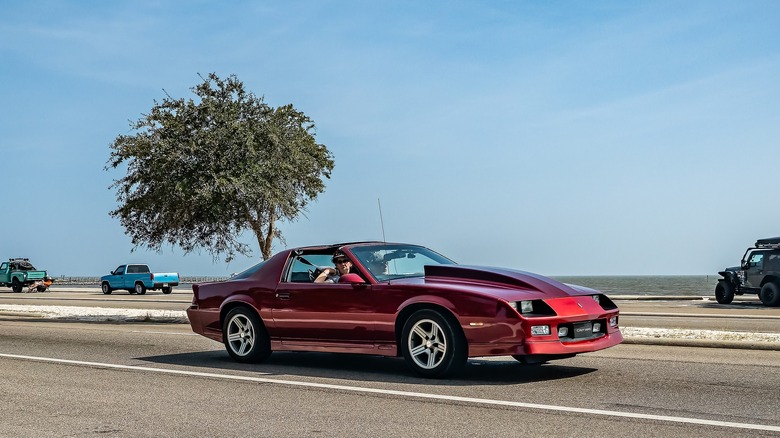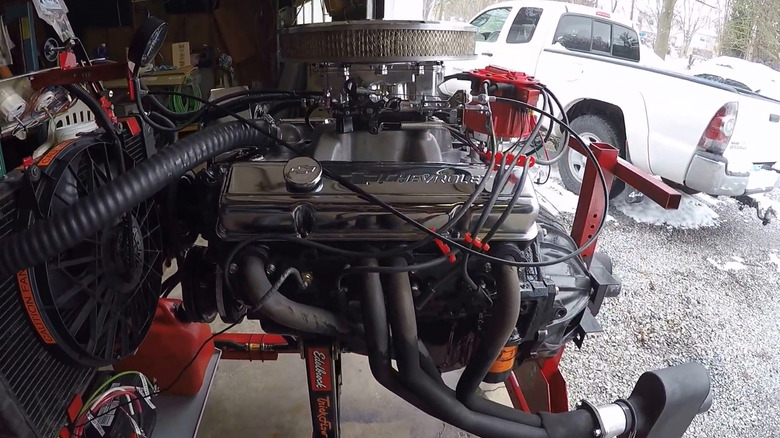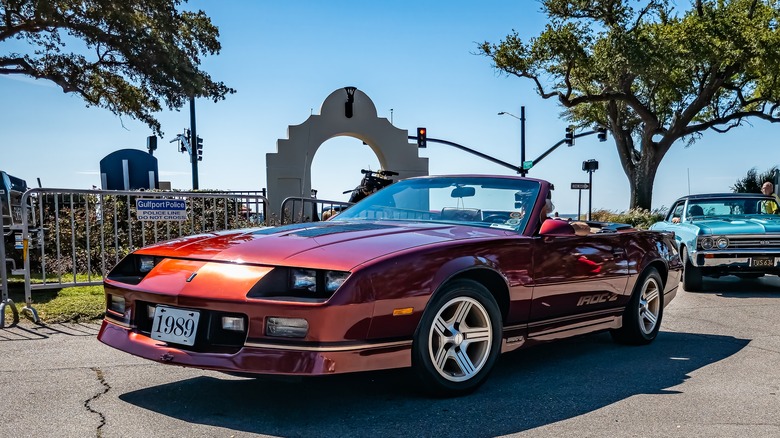
When it comes to 20th century American-made engines, Chevrolet's big block V8 motors are among the most highly regarded by automotive enthusiasts and experts alike. With their power, durability, and readily available upgrades, these engines earned a mention in our rundown of the most iconic engines from the muscle car era. Like its big blocks, Chevy's small block V8 engines like the very popular 350 cubic inch V8 have carved out a place in the vehicle industry, including for engine swaps and racing
builds.
Chevy's 305 cubic inch V8 sometimes don't get as much attention as its small-block siblings, and is regarded by many enthusiasts as underpowered. Let's review the development and implementation history of this engine and discuss why it deserves more respect than it's given by some Chevy loyalists. Much of the public opinion regarding the 305 has more to do with the timing of its debut than any of its actual or perceived shortcomings, so let's start with a closer look at those circumstances.
Read more: 5 Limited Edition Firebirds Every Pontiac Fan Should Know About
The Chevy 305 Came Along During A Big Transition For The Auto Industry

Chevrolet introduced the 305 cubic inch V8 in the late 1970s, which was a tough time for muscle car aficionados. Until then, many American cars had massive engines with impressive power outputs. The Boss 429 that came in the 1969 Ford Mustang could crank out up to 375 horsepower, and Oldsmobile and Pontiac made 455 cubic inch V8s that produced well over 300 horses.
Within the span of a few years, the auto industry was affected by the 1970 Clean Air Act, the 1973 oil embargo, and the 1975 implementation of Corporate Average Fuel Economy (CAFE) standards. In response to these events, many of the industry's beefier powerplants were phased out in favor of smaller, less powerful engines. The 305-inch V8 was first used in 1976 and was Chevrolet's response to the changes that were quickly rendering larger V8 engines obsolete. One state-of-the-art component that found its way to many applications of the Chevy 305 was the High Energy Ignition (HEI) coil-on-cap distributor, which was introduced in the mid-'70s. It was a big improvement over previous ignition systems and remains popular as an upgrade on many older engines.
Chevy's 305-Inch V8 Traded Power For Fuel Economy

As you might expect, the 305 was designed to prioritize fuel efficiency over sheer power. It had less displacement thn many of the engines that came before it, although its pistons traveled the same 3.48-inch stroke as the 350 cubic inch small-block V8. However, the 305's bore of 3.736 inches was smaller than the 350's even 4 inches. The 305 also produced lower power numbers compared to its bigger, older siblings. The LB9 series 305 in the 1989 Chevy Camaro IROC-Z only made 230 horsepower, which was a big step down from Chevy's earlier V8s. For example, the 1970 LT1 350-inch engine cranked out as much as 370 horsepower. This lower power output overshadowed the 305's decent fuel efficiency. A 1984 Monte Carlo with the 305 averaged a combined 17 mpg; the 1982 Monte Carlo with a 268 cubic inch V8 got just 11.5 mpg. Since the 305 shared some parts with the 350, it was relatively inexpensive to develop and manufacture, which should have earned it some goodwill.
Sadly, that didn't happen immediately, although over time the 305 became a racetrack favorite. Third-generation Camaros and Pontiac Firebirds with the 305 performed well in the NHRA's stock and super stock eliminator drag racing classes, thanks to performance-boosting upgrades. The 305 is also popular in sprint racing thanks to its relatively light weight and International Motor Car Association (IMCA) rules that limit engine size. While the 305 didn't have the best of beginnings, it still managed to find a place in the industry. Chevrolet saw fit to drop it in the IROC-Z, Monte Carlo, and El Camino. With modifications to cylinder size and upgrades like turbochargers and superchargers, some engine builders have managed to wring close to 500 horsepower out of Chevy's underappreciated 305-inch V8.
Want the latest in tech and auto trends? Subscribe to our free newsletter for the latest headlines, expert guides, and how-to tips, one email at a time.
Read the original article on SlashGear.











